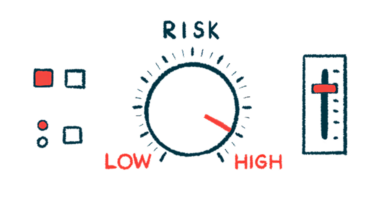Floodlight MS app cost-effective for patients to track their health: Study
Early detection, timely treatment may help prevent further MS progression

The Floodlight MS app, a digital health application used to track dexterity, walking function, and cognition in people with multiple sclerosis (MS), has been deemed cost-effective in a new analysis.
Modeling simulations showed MS patients who use the app experience fewer relapses and slower disability progression, which would improve their quality of life and lower healthcare costs.
“Earlier detection of disease progression and MS relapses, potentially through the use of the Floodlight MS app, combined with timely therapy adjustments, can help prevent further disease advancement,” researchers wrote.
The study, “Cost-effectiveness of the Floodlight MS app in Austria. Unlocking the mystery of costs and outcomes of a digital health application for patients with multiple sclerosis,” was published in Digital Health.
Floodlight MS app helps patients track how their disease is progressing
The Floodlight MS app by Roche is a smartphone application that helps MS patients track how their disease is progressing between doctor’s visits. It includes five individual tests that correlate well with three standard MS assessments: the nine-hole peg test, which assesses hand motor skills, the timed 25-foot walk, which monitors walking abilities, and the symbol digit modalities test to monitor cognition.
“These kinds of digital health applications are a valuable complement to medical care and should play a key role in the digitization of healthcare systems,” the researchers wrote. “Despite these promising benefits, there is still limited evidence on the cost-effectiveness of digital tools.”
A team led by scientists in Austria developed a model to assess the cost-effectiveness of standard of care MS treatment with or without the Floodlight MS app over 10 years. This study was funded by Roche Austria.
The modeling analysis included two groups of people with relapsing-remitting MS: patients starting treatment for the first time, or treatment-naïve, and those already receiving treatment. The team modeled the app’s role in early detection of relapses and disease progression to improve quality of life.
“The Floodlight MS app may mitigate disease progression and MS exacerbations, potentially resulting in improved health outcomes, quality of life, and anticipated cost savings,” the team wrote.
Among treatment-naïve patients, modeling showed the cost per patient for the standard of care plus Floodlight MS was 92,935€ (about $97,000) over 10 years. By comparison, the cost for those receiving standard of care alone was 90,275€ (about $94,000), for a difference of 2,660€ ($2,700) in favor of standard of care alone. Still, using the Floodlight MS app reduced medical costs by 786€ ($820).
Use of Floodlight app linked to fewer relapses, slower disability progression
Patients who combined standard MS treatment with the Floodlight app would experience fewer relapses and slower disability progression, translating to an improvement in quality-adjusted life years (QALY) of 4.5 months in perfect health. QALY measures disease burden that accounts for quality of life and the number of years lived. For example, one QALY equates to one year in perfect health.
The results were similar for pre-treated patients. Standard treatment plus Floodlight led to higher costs, amounting to 2,727€ ($2,800) more than using standard of care alone. However, medical expenses were reduced by 718€ ($750). These patients would also experience fewer relapses and slower disability progression, leading to a QALY improvement of 4.2 months in perfect health.
Across both patient groups, these findings were influenced mainly by variations in the rate of app adherence, followed by the discount rates of utilities and costs.
In the treatment-naïve group, when the willingness-to-pay (WTP) threshold was set at 25,000€ ($26,000) per QALY gained, the maximum price someone is willing to pay for medication, the app plus standard of care was deemed cost-effective in 100% of simulations.
When the WTP was dropped to 10,000€ ($10,400), nearly all (93.9%) simulations were still in the cost-effective range. Even in the pre-treatment group with a WTP of 10,000€, most (84.3%) simulations were considered cost-effective.
“The integration of the Floodlight MS app is highly cost-effective for all patient groups,” the scientists concluded. “These findings highlight the importance of early adoption and its potential to enhance patient outcomes…. Further research is crucial to evaluate the real-world performance of the Floodlight MS app.”








